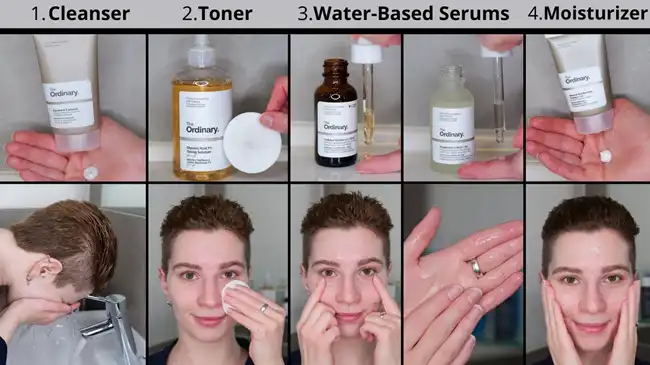Pure Salicylic Acid Powder: Benefits for Skin
2024-12-16 14:48:38
Pure salicylic acid powder is a potent skincare ingredient renowned for its ability to address various skin concerns. This beta-hydroxy acid (BHA) penetrates deep into pores, effectively exfoliating and unclogging them. Its oil-soluble nature makes it particularly beneficial for those with oily or acne-prone skin. Salicylic acid powder offers anti-inflammatory properties, helps reduce sebum production, and promotes cell turnover, resulting in clearer, smoother skin. When used correctly, this versatile ingredient can tackle issues ranging from acne and blackheads to uneven texture and dullness, making it a valuable addition to many skincare routines.
Top 5 Uses of Salicylic Acid in Skincare
Acne Treatment
Salicylic acid powder is a powerhouse when it comes to combating acne. Its ability to penetrate pores and dissolve excess oil makes it highly effective in preventing and treating breakouts. By exfoliating dead skin cells and unclogging pores, salicylic acid reduces the formation of comedones, which are the precursors to acne lesions. Additionally, its anti-inflammatory properties help soothe existing blemishes, reducing redness and swelling associated with acne.
Blackhead and Whitehead Removal
The keratolytic properties of salicylic acid powder make it an excellent choice for addressing stubborn blackheads and whiteheads. It works by softening and dissolving the keratin that forms these comedones, making them easier to remove. Regular use of salicylic acid can help prevent the formation of new blackheads and whiteheads, keeping pores clear and minimizing their appearance over time.
Exfoliation and Skin Texture Improvement
As a chemical exfoliant, salicylic acid powder gently removes dead skin cells from the surface of the skin. This process helps to improve overall skin texture, reducing roughness and promoting a smoother, more refined appearance. Unlike physical exfoliants, salicylic acid provides a more uniform exfoliation without the risk of micro-tears in the skin, making it suitable for those with sensitive or acne-prone skin.
Oil Control
For individuals with oily skin, salicylic acid powder can be a game-changer. It helps regulate sebum production by penetrating the pores and dissolving excess oil. This action not only helps control shine but also prevents the buildup of oil that can lead to acne and enlarged pores. By maintaining balanced oil levels, salicylic acid contributes to a clearer, more matte complexion.
Anti-Aging Benefits
While often associated with acne treatment, salicylic acid powder also offers anti-aging benefits. Its exfoliating action helps to reduce the appearance of fine lines and wrinkles by promoting cell turnover. This reveals fresher, younger-looking skin beneath. Additionally, salicylic acid's ability to unclog pores and improve skin texture contributes to a more youthful, radiant complexion overall.
How to Safely Use Pure Salicylic Acid Powder?
Proper Dilution Techniques
Using pure salicylic acid powder safely requires careful dilution. The recommended concentration for skincare use typically ranges from 0.5% to 2%, depending on your skin's sensitivity and the specific concern you're addressing. To dilute the powder, mix it with a suitable base such as distilled water, aloe vera gel, or a lightweight oil-free moisturizer. Always use precise measurements and pH test strips to ensure the final solution is within the optimal pH range of 3-4 for maximum efficacy and minimal irritation.
Patch Testing and Gradual Introduction
Before incorporating salicylic acid powder into your skincare routine, it's crucial to perform a patch test. Apply a small amount of the diluted solution to a discreet area of skin, such as behind your ear or on your inner forearm. Observe for any adverse reactions over 24-48 hours. If no irritation occurs, gradually introduce the product into your routine, starting with once or twice a week and slowly increasing frequency as your skin acclimates. This cautious approach helps minimize the risk of skin irritation or sensitivity.
Precautions and Potential Side Effects
While salicylic acid powder is generally safe for most skin types, it's essential to be aware of potential side effects and take necessary precautions. Some individuals may experience dryness, redness, or peeling, especially during initial use. To mitigate these effects, always follow up with a moisturizer and use sunscreen during the day, as salicylic acid can increase sun sensitivity. Avoid using salicylic acid in combination with other potent actives like retinoids or other exfoliants without professional guidance. Those with aspirin allergies, pregnant women, and individuals with certain skin conditions should consult a dermatologist before using salicylic acid products.
DIY Exfoliation with Salicylic Acid Powder
Creating a Basic Salicylic Acid Toner
A simple yet effective way to incorporate salicylic acid powder into your skincare routine is by creating a DIY toner. Start by dissolving 1-2% salicylic acid powder in distilled water or witch hazel. For a 100ml solution, this would mean using 1-2 grams of powder. Gently heat the mixture to ensure complete dissolution, then allow it to cool before transferring to a clean, dark glass bottle. This toner can be applied using a cotton pad after cleansing, helping to exfoliate and clarify the skin. Remember to shake well before each use and follow up with a moisturizer to prevent dryness.
Formulating a Salicylic Acid Spot Treatment
For a targeted approach to blemishes, you can create a salicylic acid spot treatment. Mix a small amount of salicylic acid powder (around 1-2%) with aloe vera gel or a light, non-comedogenic oil like jojoba or squalane. This creates a soothing base that helps counteract any potential drying effects of the salicylic acid. Apply this mixture directly to individual blemishes or areas prone to breakouts. The concentrated formula helps to quickly address acne-causing bacteria and excess oil, promoting faster healing of existing blemishes and preventing new ones from forming.
Incorporating Salicylic Acid into a Clay Mask
Enhance the clarifying properties of a clay mask by adding salicylic acid powder. Start with a base of kaolin or bentonite clay, then incorporate about 0.5-1% salicylic acid powder. Mix the dry ingredients thoroughly before adding water or hydrosol to create a paste. This combination provides a powerful detoxifying treatment, with the clay drawing out impurities while the salicylic acid exfoliates and unclogs pores. Use this mask once a week for oily or acne-prone skin, leaving it on for no more than 10-15 minutes to avoid over-drying. Always follow up with a hydrating serum or moisturizer to replenish the skin's moisture balance.
Conclusion
Pure salicylic acid powder is a versatile and potent skincare ingredient that offers numerous benefits for the skin. From its acne-fighting properties to its ability to improve skin texture and combat signs of aging, salicylic acid has earned its place as a staple in many skincare routines. By understanding how to safely use and incorporate this powerful ingredient, whether through professional products or DIY formulations, you can harness its potential to achieve clearer, smoother, and more radiant skin. Remember to always approach skincare with patience and consistency, and consult with a dermatologist if you have any concerns about integrating salicylic acid into your regimen.
Contact Us
Ready to experience the transformative power of Pure Salicylic Acid Powder for your skin? Contact Xi'an ZB Biotech today at Jessica@xazbbio.com to learn more about our high-quality salicylic acid powder and how it can elevate your skincare routine or product formulations. Our team of experts is ready to assist you in finding the perfect solution for your skincare needs. Our factory also can supply OEM/ODM One-stop service,including customized packaging and labels.
References
1. Arif, T. (2015). Salicylic acid as a peeling agent: a comprehensive review. Clinical, Cosmetic and Investigational Dermatology, 8, 455-461.
2. Kligman, D., & Kligman, A. M. (1998). Salicylic acid peels for the treatment of photoaging. Dermatologic Surgery, 24(3), 325-328.
3. Bari, A. U. (2007). Glycolic acid peeling versus salicylic-mandelic acid peeling in active acne vulgaris. Journal of Pakistan Association of Dermatologists, 17(4), 235-240.
4. Fabbrocini, G., Annunziata, M. C., D'Arco, V., De Vita, V., Lodi, G., Mauriello, M. C., ... & Monfrecola, G. (2010). Acne scars: pathogenesis, classification and treatment. Dermatology Research and Practice, 2010.
5. Zander, E., & Weisman, S. (1992). Treatment of acne vulgaris with salicylic acid pads. Clinical Therapeutics, 14(2), 247-253.
6. Leyden, J. J. (2003). A review of the use of combination therapies for the treatment of acne vulgaris. Journal of the American Academy of Dermatology, 49(3), S200-S210.
Send Inquiry
You may like





